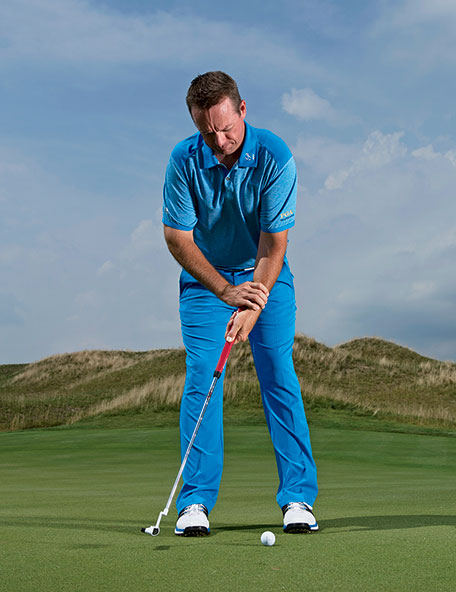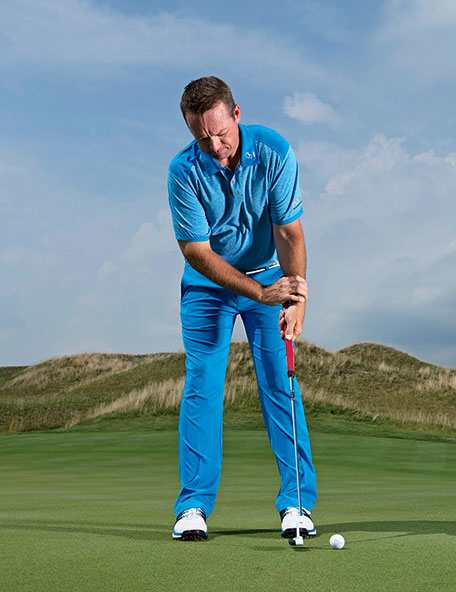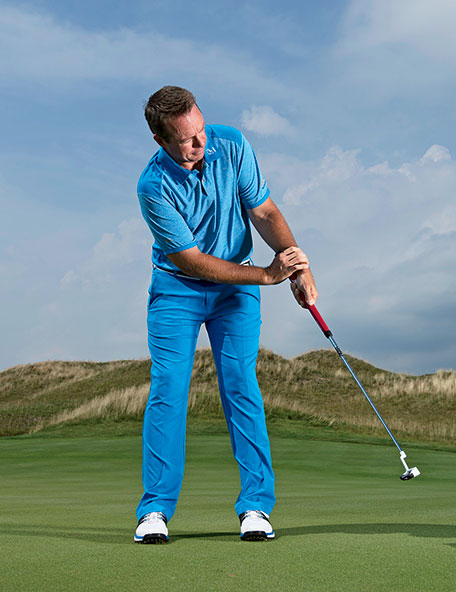We all know golf’s rulemakers have made it illegal to anchor the club to your body during the putting stroke. But what a lot of golfers still don’t know is how they’re going to putt if they’ve been anchoring and now can’t.
Three years ago I came up with a grip that helps stabilise the stroke, like anchoring does. I call it the Gator Clamp because you use your right hand to clamp the top of the grip against your left forearm [above]. Your right hand looks like an alligator chomping on your left arm. (Truth is, it’s the Gator Clamp because I played for Florida, and we Gators love our mascot.)
You might remember me playing Tiger Woods in the 1996 US Amateur final. Why didn’t I turn pro? Actually I did, but I struggled with my putting. I’ve had some form of the yips since I was 19. So it was a long road of yip remedies that brought me to the Gator Clamp.
To give it a try, start with a slightly longer putter, called a mid-length putter.


Place the butt of the grip against your left forearm. This will arch your left wrist slightly and get the grip running up the lifeline of your left palm, both of which stabilise the putterface. This also will tilt the shaft towards the target, so it’s good to get a putter with some loft – mine has six degrees. But the big difference is how the right hand goes on. Most lousy putting comes from the right hand pronating, or releasing, too much through impact. So clamp that right hand against the left forearm, with the butt of the grip sandwiched in between. Now the right hand is in a fully flipped position from the start – you can’t yip it from there.


As you swing the putter back and through, let the right arm act as a piston. That’s all there is to it. It’s a great alternative to anchoring, but it can help any golfer.
– Steve Scott, 38, is the head professional at Paramount Country Club in New York.



